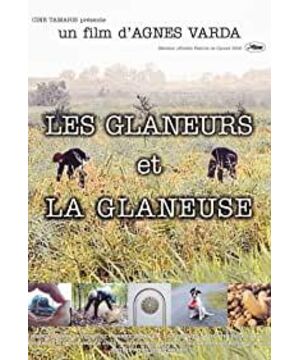Watching this movie is like reading a travel journal. The director Agnes Varda, like a curious child, recorded various stories of gleaners she met and presented them to the audience in such a respectable, captivating and profound way.
The documentary contains various elements of art, which serves as un undertone that gleaning is in fact a kind of art. The film is accompanied by classical music, sometimes the rumble of cello, conveying a sense of peace and elegance. Moreover, the theme of the movie—the gleaners—is introduced through an oil painting The Gleanersby Jean-François Millet, and then several other paintings thread different places with different gleaners and lifestyles. The closeups of the paintings, the elaborate exposition of them, and the clips of the museums elevate this behavior and this group of people, as if the director leads us to stand in front of these works of art, stare at and appreciate them for a long time, and try to think deeper. As she said, “The aim of art is to tidy up one's internal and external world.” The parallel between art and gleaning, the purging of one's soul, implies that gleaning deserves to be respected, recorded, cherished, and memorized.
I'm especially touched by Varda's charm and her showing up in the documentary as an easy-going contributor. She is not only an interviewer, but also an active player in gleaners' lives: she shakes hands with them, visits their houses, and buys various amazing stuff from all over the world. She joins the gleaners as shown from the first point of view, picking up tomatoes and heart-shaped potatoes. She uses many jump cuts of gleaners “humbly stopping” and “scouting” around for food or other goods, emphasizing the significance of this move—gleaning is respecting the gift of nature and cherishing what have long sustained us human beings. It is also a silent fight against the consumerism. We usually treat gleaners through biased lenses—they might be poor , dirty, belongs to lower-class, with various diseases,but Varda reveals part of the social reality (the widening gap between the rich and poor), and more importantly shows why they choose to glean at the first place. Once we get to know the motives, such as avoiding wasting or doing personal collections, we can approach them as who they are instead of marginalized people. In this sense, Varda eliminates the stereotypes about gleaners and pays tribute to them.
Furthermore, Varda shows both her innocence and maturity in this film, which adds relish to this serious topic and broadens the meaning. The jump cuts of enclosing trucks with her hand are child-like, suggesting her ability to dig out the appeal from the mundane . She frankly displays her withered hands and thin hair in front of the camera, as “an animal I don't know”. Age marks her skin, yet takes nothing from her. The rap music seems to be at odds with the whole film , yet I can feel the joy and vitality in gleaning. The clock without hand is to avoid “seeing time passing”, highlighting the sense of “living in the present”. Varda is also a gleaner, not only because she bought these gadgets, but that she is always picking up stories to be remembered and juicy moments of life. I hope to be an honest gleaner like her, with my own pace and style.
View more about The Gleaners & I reviews







